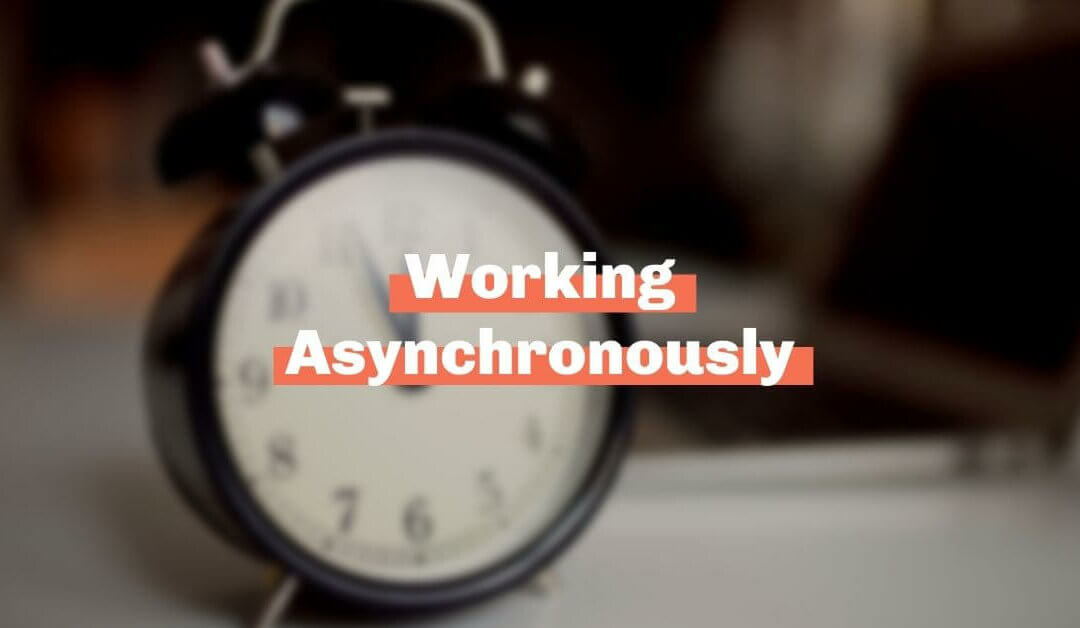
by Allison Kooser | Jun 2, 2022 | Uncategorized
Our team is really into two things: building a company that works for us and the project management tool, Basecamp.
So when the Basecamp team (a team that regularly writes about the perils of overwork, the value of asynchronous schedules, and the power of doing things differently) put out a manifesto of sorts, recounting their core tenets as a business, we were pumped. (This is what we very-into-studying-work-culture nerds call a big moment.)
Basecamp (now, once again, branded as 37signals) has taught us a lot about how to approach work. As you might remember, here at Swell+Good, we cancel meetings. We don’t believe in work emergencies (and we don’t create them for others.) We set boundaries, we talk to our colleagues like humans, and we build schedules that work for our lives.
Put simply, we define our own team culture.
We get to decide.
And so do you.
If you’re the boss—of a company, an organization, a team, heck, even a household, this is not just an option, it’s an imperative.
Perhaps the most important thing you can do is decide how your team will work. The what will get filled in—it always does. The how, though, that’s a choice. And it’s largely up to you.
If you’re not the boss, you might feel like this doesn’t apply to you—but I beg to differ. Sure, you might have more tasks placed upon you, but you still get to decide your own how. You might not get to opt out of meetings, but you can certainly push back to make your meetings more efficient. You might not get to define your own hours, but you can probably decide what you do when within your 8-5.
We are not at the mercy of our jobs. We get to (and should!) define the processes that will make work (and, spoiler, life) better for us.
Instead of links to outside articles, this week, we’re sharing five of the 37signals lessons that we can’t stop thinking about. We invite you to read the whole list, then send us a note with the ones that resonated for you.
Better yet, what are the signals that drive your own company (or life or home) culture? If you were making your own list, what would you add to it?
Ready, set, go.
#2: Work isn’t war. ⚔️
How you talk about yourself matters. So when all of your analogies are pulled from battle, every day is going to feel like a fight. Same goes for language that makes tasks feel huge or impossible or all-consuming. If you talk about them that way for long enough, they’ll live up to expectations.
#3: Small teams. 👫
“Small is often plenty.” Wow yes and amen. We think we need to do huge, sweeping things—but what if one tiny, effective thing is better? Do that. Save your brain. Save your effort. Save your human capital. Bigger isn’t always better
#8: 8/8/8. 😴
You need to sleep. You need to play. You need to have a life. So do great work. Make a difference. But don’t forgo your humanity in the process. When things are going off the rails, chances are good that you need to go to bed.
#11: Don’t emulate the office. 💻
You don’t have to do things the way they’ve always been done. If COVID has taught us anything, it’s that there are lots of ways to do the jobs in front of us. Turns out you don’t actually need to be in an office to collaborate. What if you rethought your other expectations, too? What would you delete/change/add?
#33: Planning is guessing. 📝
This one is tricky for us, but it resonates. We love plans. But the longer your time horizon, the less reliable your plans will be. Better to aim in the near term and actually hit your target, then repeat the process over and over. Frequent planning is better planning.

by Allison Kooser | May 12, 2022 | +Good Newsletter, Copywriting, Marketing, The Intro, Work Smarter
One of the first projects our Chief Strategist, Ian, completed as a young marketer was a how-to guide for MySpace. It was a PowerPoint. And he printed it to show his team. (I think this is where the kids say something like, “Ok, boomer.”)
The simple reality is that we’ve been at this digital marketing game for a long time.
And over the last 15 years, we’ve created a LOT of content.
Blogs, infographics, social media, web pages, articles, thought leadership…if you’re anything like us, you’re sitting on a treasure trove of great material that you have already created.
Yet our impulse is still to create something new. To come up with the next great idea. To start over. And start over. And start over again.
Why?
Why do more work when you can, instead, do more efficient work? And why reinvent the wheel when you have a perfect circle within arm’s reach?
The reality is that most of your audience doesn’t remember your content.
Sad, but true.
And if your audience is growing (we’d love to help you do this, btw), then the new people on your email list weren’t around to receive that awesome message three years ago. They didn’t see it at all.
At every conference we’ve ever been to, the “experts” tell us one thing, over and over: Create engaging content. We always laugh at that because, duh, but also, they’re right. Good content is marketing magic—it’s why we built a storytelling agency. But we’d like to add to their advice: Create engaging content. And keep using the content you’ve created.
If you’re looking for easy, accessible content to share, chances are you already have it.
So how do you make use of the amazingness at your fingertips?
You need to do a content audit.
Spend time evaluating the material you already have, and start answering these questions:
- What is still working for you? These are the pages that are still getting lots of traffic and the pieces that are still getting used, so make sure the data and stories presented are accurate! Also, make sure these pages and pieces have logical next steps—where does a donor or prospect go after reading it?
- What ISN’T working? In the wise words of Marie Kondo, if a piece of content isn’t bringing you joy anymore, it might be time to let it go. Or rewrite it. Or start over.
- What could be working better? This is our favorite question! What are the stories in your arsenal that are interesting but unread? What blogs still work, especially if you were to spend five minutes updating them? What long-form articles could be parsed into a full month of social content? What can you re-share, re-post, or re-work?
As you approach that last question, here are a few easy ways to get started:
- Throwback Thursday. Post an old story in its entirety—no extra work required!
- Repost your long-form. With well-researched long-form content, take the time to edit and update the information presented. Then repost the blog or article with an “updated” date—voila: new content. The SEO crawlers will love you.
- Parse a blog into social. A full blog might not be super relevant anymore, but chances are high that you could find one or two sound bites that might be great social posts! As we always tell young writers, plagiarize yourself! If you’ve done the work, you can reuse it across channels!
- Milk a piece for all its worth. Did you write a great impact report? Awesome. Now post it online. Pull five social posts out of the content. Turn it into a listicle. Independently share the infographics. Work smarter, not harder. You have so much existing content available to you!
You can breathe life into old content—and Swell+Good is here to help. We conduct content audits for many of our clients, helping them identify what’s working, what’s not, and what could be. Then we help them turn the materials they have into a robust content calendar that is bursting with powerful stories.
Want to learn more? Shoot us an email, we would love to talk to you!

by Allison Kooser | Apr 28, 2022 | +Good Newsletter, Work Smarter
It’s no surprise that we’re fierce advocates of protecting our time. And one of our favorite things to remind our teams is that there is no such thing as a work emergency when you work in digital marketing. (In case you need the reminder, too: THERE IS NO SUCH THING AS A MARKETING WORK EMERGENCY.)
Except.
Humans are humans, donors are donors, coworkers are coworkers, and clients are clients. All too often, the people around you forget to plan (or ignore your well-crafted plans) and force you into a time crunch. And as much as you try to cancel meetings and set boundaries, you aren’t the only one who can throw a wrench in your calendar.
So while, philosophically, you don’t have emergencies, practically, if you’re anything like us, you definitely have pressure.
The question, then, is what do you do in response?
What do you do when people need things and they need them now?
What do you do when it feels like you cannot take a sick day because you’ll fall too far behind?
What do you do when your to-do list has 900 competing priorities, all of which deserve attention, and most of which needed attention yesterday?
After hiding under the covers or screaming into a pillow or taking a long shower (all very cathartic, in case you were wondering…), we like to follow a few simple guidelines to deal with stressful days (weeks, months…). This isn’t an exhaustive list, but it’s a place to start on things that feel like emergencies (that aren’t really emergencies).
8 ways to respond to that “work emergency”:
- Take a deep breath. You might not get to everything. That sucks, but that’s reality. Got it? Keep breathing. You’re no good to anyone if you’re hyperventilating.
- Prioritize your list. We know everything feels like it needs to get done right this second, but if you slow down and look, that might not actually be true. What can you possibly move to a different day? Can anything go to next week? On really crazy days, we prioritize by the hour. What needs to be done before noon? Delete everything else from the morning list.
- Phone a friend. Who on your team can jump in? Call them. Right now. You do not need to be a hero, and being a hero will destroy you. You do not need to shoulder the entirety of a stressful situation on your own. This is why coworkers exist. This is why we build great teams.
- Set expectations. Are you really not going to make a deadline? Tell someone. Yes, this conversation is not going to be fun, but better to establish an honest reality than have your stakeholders assuming one thing and experiencing another.
- Eat snacks. We are firm believers that 85% of life’s challenges get better after a nap and a snack. If you have the ability to power nap for 20 minutes, do that. If not, at the very least, eat something.
- Ruthlessly eliminate unnecessary tasks. One of our team members used to produce a major conference for a client every year, and in the two weeks leading up to the event, she put a hard-core screening system on her email and phone. If you were not a direct vendor for the event, she sent you to voicemail and didn’t call you back until the event was over. Brutal. But effective. Did people get annoyed? Sure. But the priority was the priority, and everything else was…not.
- Take dance breaks. Our brains are not designed to focus all day long. In fact, our brains cannot focus all day long. Research shows that it is WAY more effective to work in spurts punctuated by true breaks than it is to “power through.” So take breaks. Blast some music. Dance. Then get back to it.
- When you hit your breaking point, stop. Listen. You matter so much more than your work. Do not let a project (even a very important project) hurt you. If you are getting sick, stop. If you cannot keep your eyes open, stop. If you feel like your mental health is teetering toward precarious places, stop. It’s not worth it. You are. Protect yourself. Be your own fiercest advocate.
We know what busy seasons feel like. We know what overwhelming days feel like. And we know that we are still learning to deal with work stress right alongside you.
We also know that cracking this nut is important because our well-being is important. We want to love our work, and that means developing a plan to handle hot mess disasters even before they arise.
What would you add to our list? What helps you get through even the most pressure-filled moments? Let us know in the comments.

by Allison Kooser | Apr 14, 2022 | +Good Newsletter, Work Smarter
Here at Swell+Good, we talk a lot about work processes. How do we make our team more efficient? How do we improve quality? How can we better serve our clients? And, most importantly, how do we make sure that everyone on our team actually gets to enjoy their life?
Yes, we love marketing. And yes, we love helping organizations raise more support so that they can better do the work they were born to do. That’s our what, and we’re kind of obsessed with it.
But if we’re honest, we give equal attention to our how—to the way we do the work, not just the work itself. We’re very, very into work culture. We’re very, very into people being humans first and employees second. And we’re very, very into work being fun and not-terrible.
We were virtual and remote long before being virtual and remote was cool, so we’ve had lots of time to get creative on how we connect and communicate—and ultimately we feel pretty proud of where we’ve landed.
Our tricks aren’t magic, but they are intentional. And over the next few weeks, we’re excited to give you an inside look at the secret sauce of Swell+Good.
First up, we’re asynchronous.
That means that our team can work whenever they want, wherever they want.
Or, more simply, working asynchronously means when you send a message you don’t expect an immediate response.
And here’s the deal: “Not only does async produce the best work results, it also lets people do more meaningful work and live freer, more fulfilled lives.”
Working Asynchronously? How? Well, let’s turn to the research!
- Synchronous communication prioritizes communication over productivity. “Synchronous communication is heavy on staying connected. Here, you are expected to be available at all times during the day. In a team group chat with over 10, 50, or even 100 employees, this could mean you could possibly miss out on important information just because you weren’t available within a certain timeframe.” (Read more!)
We’ve all experienced this, right? Sitting on Slack waiting for a response? Getting left behind as a reply-all email spirals out of control? Watching your colleagues travel way off course on a problem you could have solved in two seconds all because you took a 30-minute break to make a sandwich?
The worst. - Synchronous communication promotes overworking and increases work-related stress. “Being constantly available translates to working 24/7 with no downtime. Employees, especially those with parental and spousal responsibilities, fail to find a work-life balance, resulting in increased levels of stress that can often lead to burnout.” (Read more!)
This is the real problem. When you’re expected to be “on” 24/7, you’ll….be on 24/7. And that’s just not a healthy way to live.
(You already know our opinions on work emergencies. And if not, here’s a hint: You don’t actually have any.)
But here’s the deal, friends. It doesn’t have to be this way.
When you prioritize working asynchronously instead of rapid chat (or, even worse, constant meetings), you give your team freedom. You give them flexibility. You give them time.
Sure, we have client calls that are scheduled. And there are some conversations that just have to happen immediately. But 85% of our internal communication can wait—so it does.
Here’s how:
- Really, really good task and project management. We use Basecamp (another huge fan of async, btw), but you can use any tool you like. The key is actually using it—and making sure that everyone on your team is using it, too.
- Long-form written updates. It’s the old “this meeting could have been an email” except instead of an email, we default to public posts. Have notes you want to share? Type them up. Have a discussion question? Post it and let people reply when they have time. Writing—then sharing that writing in an open-to-your-team forum—is where the magic happens.
- Plan ahead. If you don’t want crazy, “emergency, do this now” deadlines, you need to have a long horizon. Same-day deadlines are not in our policy (they happen sporadically because…life, but they are absolutely the exception, not the rule). This lets people plan their days and their weeks without worrying about missing a key task that got added to their list two hours ago.
- Over-communicate. Asynchronous communication works when everyone explains everything they’re thinking. Over-communication also makes occasional meetings and conversations way more productive because everyone on your team is already up to speed!
We’ll keep sending you what we’re learning about working asynchronously (and all of our work processes! We’ve got lots more to test and discover and share!)—and we want to hear from you, too! Have you tried async communication? How has it worked for you? Let us know by replying to this email. Just make sure you do it at a time that works for you.
by Allison Kooser | Mar 11, 2022 | +Good Newsletter, Gratitudes
This week, we are thankful for…hobbies. One of our team members is learning to knit. Another loves hiking. And one went alllll the way down the sourdough rabbit hole mid-pandemic. Here at Swell+Good, we are decidedly pro-hobby. We love doing things that serve no material purpose other than to bring us joy. (Honestly, the best goal.) And we love trying something new—even (especially) when we’re total beginners. It’s a great way to learn to be bad at things—and a great way to laugh at ourselves. So this week, we’re grateful for our hobbies—and we’d love to hear about yours! Reply to this post letting us know what fun, silly, joy-bringing thing you’re into right now!




